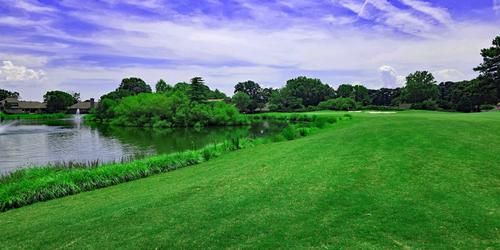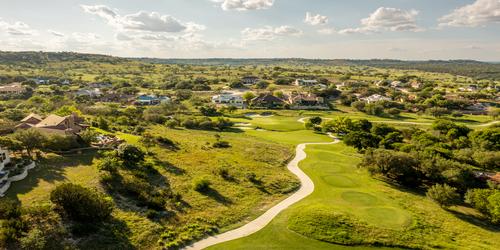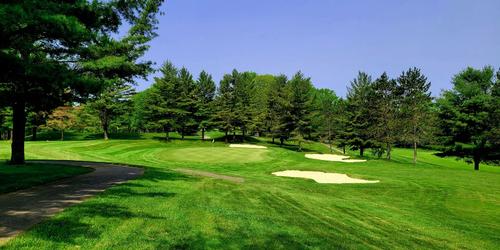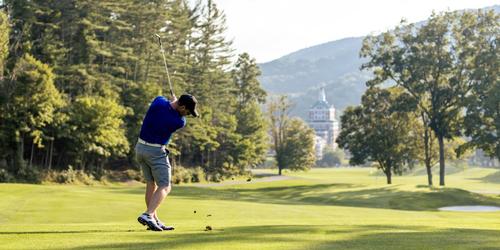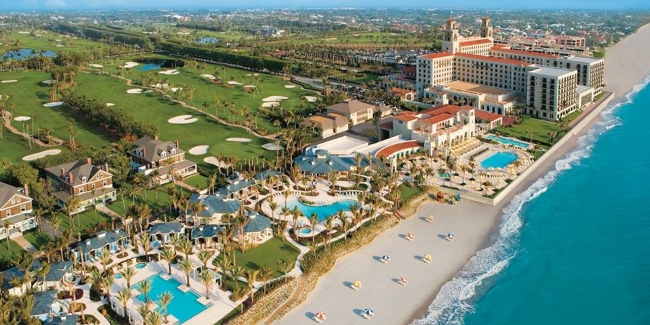
The Ocean Course at the Breakers Resort Review
A Timeless Classic
By David Theoret
The Ocean Course at The Breakers in Palm Beach is Florida's 1st 18-hole golf course. It was originally laid out by Scotsman Alexander H. Findlay in 1896 and, in the 1920's, Donald Ross played around with it, changing the original sand greens over to grass and adding some length to Findlay's original 4,925 yard layout.
After Ross' tinkering, the course remained virtually unchanged and, like most things that are exposed to salt spray, blazing sun, and a constantly blowing wind for long periods of time, this seaside course quickly began to show its age.
In 2000 the Breakers hired then reigning Golf World Magazine Architect of the Year, Brian Silva, to redesign the course and return it to its splendor of days gone by. In redesigning the course, Silva combined his love for the game with the impact that new equipment and technology was having on it. He was able to preserve a lot of what made the original layout special and at the same time create a course that was suitable for the next generation of golfers.
Silva's new layout focused on things like tee box sizes and elevations, surface slopes and pin placement area. He also integrated both sand and sod-faced bunkers into the layout. He installed a completely new digital drainage and irrigation system, which helps the course dry out in record time. Other changes included 200 more yards of golf course, 88 new and refurbished bunkers, many of them strategically placed, and TifEagle Bermuda grass from tee to green. Silva did a great job in bringing the quality of the course up to the standards you would expect from a track with The Breakers name on it.
The 32,000-square-foot, two-story clubhouse is home to not only a well-stocked pro shop with all of the latest gear and top-name fashions, but also luxurious men's and women's locker rooms, a fitness center, and the Flagler Steakhouse.
Land is at a premium here; consequently they ask that you not hit anything longer than a 7-iron on the driving range. Distance is relative though; most of the people I saw out there could have hit driver and been safe! There is a good sized practice putting green as well
From the back tees, the Ocean Course plays 6,167 yards to a par of 70. The course rating is 68.1 with a slope of 127. With only one par 5 on the course, it's a matter of brains over brawn if you want to score well.
Memorable Holes:
Number 2: Par 4, 369 yards. Number 2 and number 4 are nearly are carbon copy of each other only the water is flipped over on approach. Avoid the fairway bunker on the right off the tee and leave yourself a short iron or pitch shot to a relatively small green.
Number 6: Par 4, 440 yards. This is the exception to the short par 4 holes on the Ocean Course. You need to hit a great tee shot to get on in regulation and to do so requires hitting your drive between a pond on the right and a large fairway bunker on the left. Successful navigation of your tee shot will leave a long to mid-iron approach shot that is nearly all carry over H2O. The peninsular green sits amid three more bunkers. Less skilled players may want to play around the pond, get on in 3 and go for the one-putt par.
Number 9: Par 4, 301 yards. If the wind is right, you may just want to have a go at this green, especially if you can hit a draw. If you're playing to get on in two, hit a long iron or hybrid off the tee avoiding the fairway bunker on the left and you'll have a short pitch into the green.
Number 17: Par 5, 469 yards. For most of us, this is a three shot hole. Draw the ball off the tee around the fairway bunker, hit an easy layup shot down the middle and you'll be looking at a short pitch into an elevated green. Beware of the bunker in front of the green, it can be somewhat deceptive.
Number 18: Par 4, 385 yards. Avoid the fairway bunker on the right and play short of other two further down the right side and you'll have a mid-iron shot into a green with water and sand on the right side. There is a small bailout area left of the green if you're not quite up to the challenge. Par (or better) is a great way to end.
Last Word:
The course may be short, but it's perfect for the clientele that visit the Breakers. These aren't players that want to get beat up by a golf course; they are here for the relaxation and exhilaration of a classic golf course overlooking the water. If you start to play bad, just look around - it's tough to stay upset out here. If you want to take a beating, head over to the Rees Jones Course.
Although many of the par fours look short on the scorecard, the prevailing winds create a different story. For example, the 8th hole is only 296 yards on the scorecard however, playing straight at the Atlantic Ocean, it may require a well-struck fairway wood off the tee and a crisp mid-iron into the green. The pros and regulars here will recommend that you play the ball low in order to counteract the ocean winds.
Conversely, number 9, which plays away from the water, might afford you the opportunity to hit your first 300+ yard drive if you catch both the wind and the ball just right. Many of these "short" par 4's have deep penal bunkers that edge the fairways and defend the honor of the greens.
Many of the holes are fairly tight; sometimes it's best to leave the driver in the bag and hit a more controlled tee shot. There's still a good chance you can reach the green in two.
For more information or to book your next vacation at The Breakers, give them a call at (888) 273-2537 or visit the website at www.thebreakers.com.
Revised: 11/04/2015 - Article Viewed 33,574 Times
- View Course Profile
About: David Theoret
![]() David Theoret has been in the golf and golf travel industry for over 10 years, primarily selling online advertising. For the past seven years, he has also been a golf writer, reviewing golf courses, resorts, destinations, equipment, golf apparel, and training aids - the latter of which never seems to help. David's articles and reviews have been posted on many golf travel and equipment websites.
David Theoret has been in the golf and golf travel industry for over 10 years, primarily selling online advertising. For the past seven years, he has also been a golf writer, reviewing golf courses, resorts, destinations, equipment, golf apparel, and training aids - the latter of which never seems to help. David's articles and reviews have been posted on many golf travel and equipment websites.
Growing up in Southwestern Ontario, Canada, it was naturally assumed he would play hockey. Beginning at the age of 3 and continuing into his late 30's, he did just that. However, after one too many pucks to the head, he realized that golf was a lot easier on the body (whoever said hockey players were slow) and took the game up.
After moving to Florida and accepting a position with TravelGolf Media (now part of GolfNow) his love for the game grew exponentially. Most Saturdays you will find him on a course somewhere in Florida or on the practice range reinforcing his bad habits. David plays to a 10 handicap - unless there is money involved in which case it goes considerably higher. He currently resides in Lakeland, FL with his wife Belinda and their two "kids", Madyson and Molly.
Contact David Theoret:
GolfTrips.com - Contributor





